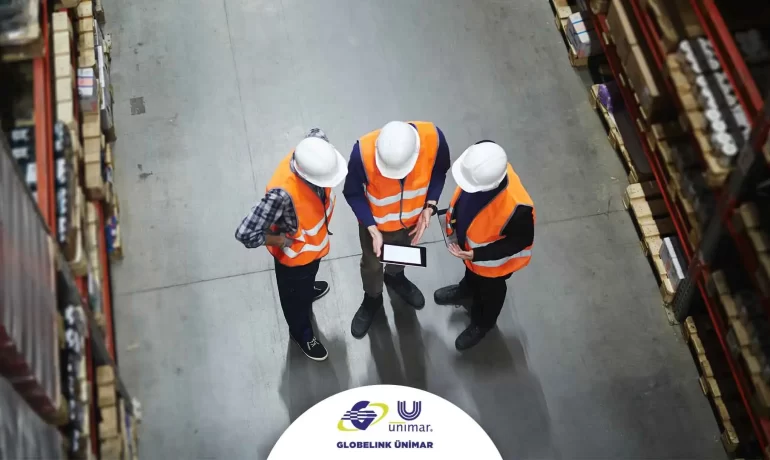
- June 22, 2021
- Blog
The logistics industry, which has come a long way in the last two decades, has combined international transportation, warehouse management, national storage, distribution, cargo services and value-added operations under one roof and has become able to provide all services other than production within the supply chain.
Headquartered in the USA, CLM (Council of Logistics Management) changed its name to (CSCMP-Council of Supply Chain Management Professionals). The council has decided that the logistics industry has now completed its development and supply chains should be managed from now on.
Logistics has been developing in our country, as well. We are proud of the distance we have covered in the last two decades. An industry that started with transportation now combines international transportation, warehouse management, national storage, distribution, cargo services, value-added operations under one roof and has become able to provide all services other than production within the supply chain.
The US-based Council of Supply Chain Management Professionals states that the logistics industry has now completed its development and supply chains should be managed from now on.
Now, with their growing scales, manufacturing companies decide to purchase all services from a single address, rather than from separate addresses. Transportation, warehousing and forwarding companies, which were described as subcontractors or contractors in the past, have incorporated different services, combined them with all transportation modes and become able to serve manufacturers all over the world. They have started to become global companies with their warehouse capacities, vehicle parks, software, experienced employees, and foreign connections.
The flow of goods, services and information within the supply chain, which was previously under the control of manufacturing companies, can now be managed by logistics companies. Companies, which take the name of logistics with these services and earn the right to transport and store, aspire to manage all their supply chains within the framework of a strategic cooperation agreement with the manufacturing companies.
Time to Transform the Value Indicators of Logistics into Corporate Information
For years, we have tried to teach logistics, held conferences, seminars, congresses, and summits, organized seminars to students at schools, published magazines, launched courses at schools, gave lectures, and invested in new software. All of these were not just for the sake of transportation and warehousing. We invested in the future. Our aim was to serve and manage the total supply chains of manufacturing companies. We are now ready to work on this.
What we will do next is to transform the process management information, process analysis, improvement, differentiation and the lean supply chain, JIT systems, milk-run system, and critical performance indicators into corporate information in logistics companies. What will be done is to increase the knowledge of the departments that will provide this within our companies and to create human resources. Logistics companies are now able to say “You just produce, we will take care of the rest” to the firms. We can explain the advantages of this goal for companies. Our manufacturing companies are aware of the situation.
The condition of achieving success in the global competition is to be able to take part in the competition by determining and applying the long-term strategies of the companies. We are able to take the transportation and storage operations which everyone does into our hands and offer strategic cooperation to the companies we work together. I know that many logistics companies in the industry are ready for this. The current education system is of a scale that will support us in developing human resources that we can use in operations. What needs to be done is that our friends studying in the logistics, industrial engineering and management departments of our universities should take courses such as storage and transportation in their training schedules. At this point, our industry leaders will contribute to this process if they behave as faculty members, train young people, and share the expectations of the industry and their experiences in the logistics industry with them. Another thing to be done will be to clarify this transition process at the right place and time.
The condition of achieving success in the global competition is to be able to take part in the competition by determining and applying the long-term strategies of the companies.
In order to carry out Industry 4.0 studies, we need to start logistics 4.0 implementations, as well. We will shortly be able to carry out largescale combined transportation, focus on the consolidation of logistics services, produce to order instead of producing for stock and then, organize fast transportation, provide logistics services without stock, and undertake storage and distribution activities in the developing e-commerce industry with the support of Industry 4.0. Commerce will now leave the place of dealers to distribution companies. While establishing large warehouses in big cities, we will be able to use transfer warehouses in small cities. The spread of chain stores to every corner of the country will increase and logistics Management will gain importance. While transporting long distances by rail, sea and road, we will plan short distance micro-distribution.
Our goals will also change in the distant future. Planned and previously known consumption will be followed and production plans can be made according to planned consumption. Fast delivery which is suitable for planned consumption will be on the agenda. E-commerce will become common and there will even be a transition to m-commerce, mobile commerce. Automation, sorting systems, automatic packaging, robot technologies will be applied in warehouses. The goal is to establish unmanned warehouses and make transportation and distribution with autonomous transport vehicles.
With large-scale consolidated shipments, there will be a trend towards minimum cycle time. Integrated logistics software will be implemented in line with these goals. Common inner-city delivery networks will be established in cities, and even stock-free delivery points will be activated on the basis of districts. Just like organized industrial zones, logistic villages in big cities and logistics centers in small cities will be built in order to support these.
All of our friends who have gained the ability to manage their customers’ supply chains and who continue to provide services should no longer consider themselves warehouse operators or truckers. We must complete our development in the logistics process and take the field within the supply chain process. We are ready for this. Let’s not be afraid, let’s not make any mistake, and let’s take part as a strategic business partner alongside the manufacturer companies.
Artificial Intelligence is Both Changing and Transforming
Today, we can see the clues that we will
The Future of the Cargo Market is Shaped by e-commerce
The e-commerce industry has been growing rapidly since the



